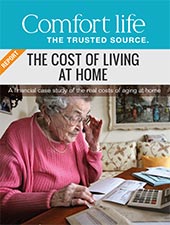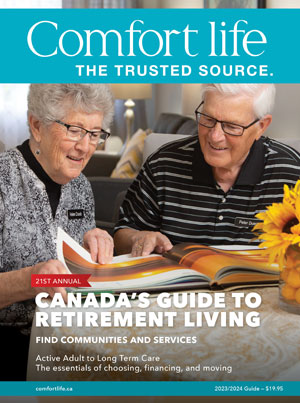Grandma's Four Tips To Keep Kids Safe By The Pool
With summer finally here, the pool open and family visiting more often, the inherent danger of children drowning in the pool has become the focus of the National Drowning Prevention Alliance.
In fact, Lana Whitehead won this year's 2011 National Drowning Prevention Alliance’s Community Lifesaver Award and she shares some great tips for other grandparents.
Lana and her business SWIMkids USA of Mesa, AZ warns that even a grandchild who knows how to swim can drown just a few feet from safety. She tells grandparents to never let a child convince you that he or she is "big enough" to swim without an adult nearby in the water.
According to the Federal Centers for Disease Control and Prevention (CDC), drowning is the second-leading cause of death for children ages 1 to 14. Almost 900 children younger than 14 drown in the U.S. each year, while another 3,600 require emergency care for nonfatal submersion injuries.
News headlines show how children drown while the adult in charge of them talked on the phone, read a magazine, or ate their lunch. Here are a few of Whitehead’s tips gleaned from almost forty-years as a swim instructor and owner of SWIMkids USA.
1. Supervision is the key to keeping a child safe around and in water.
- Maintain eye contact - drowning is silent, you will not "hear" your child drown.
- Be in the water with your child so she learns to respect the water, and you can reinforce safety skills she learns in swim lessons.
- Avoid distractions such as phone calls while watching your children.
- A third of the time when children drown in a home pool, they were last seen away from the pool area.
2. Barriers will slow a child's access to the water, but no barrier is guaranteed to stop a child. The great majority of fatal drowning’s or near-drowning’s included a breached barrier. It's very easy to lose track of a child for one minute or more. Establish several layers of barriers to make sure the child does not have enough time to get past all of them.
- Self-latching, self-closing gates with fences at least four feet high. Always lock the gate and never prop the gate open.
- Door alarms to sound if a child goes out to the pool area.
- Pool alarms to notify if anyone or anything enters the water.
- Pool covers that support the weight of an adult or more without collapsing into the water.
- Reduce/eliminate a child's attraction to the water by removing toys, etc.
Even if you install all of these safety devices remember that your pool is still the most dangerous part of your house. If you should ever lose track of a grandchild, check the pool first — most children who drown were without supervision for less than five minute
More often, a child just sinks silently beneath the water.. Strongly discourage children from playing any games that involve pretend drowning’s or rescues. If for any reason they don’t reply, find out why. Have a shepherd’s hook or life preserver next to the pool — and know how to use them. Also, if possible, have a land line poolside or nearby. If you call 911 from a cell phone, emergency services can't track your address.
3. Swim lessons save lives! A child needs to know how to save himself and buy himself time to be saved. Year round lessons are encouraged to help make the performance of water safety skills automatic in case of an emergency situation. Here are the essentials a child needs to learn in swim lessons:
- Invitation into the water – a child should learn to wait for a supervising adult's invitation to enter the water.
- Blow bubbles - if a child falls in, he needs to blow bubbles to be able to stay calm and make proper safety decisions.
- Shallow water self-rescue - a child needs to know how to push themselves up if they are lying face down in shallow water, a bucket, toilet, or bathtub.
- Fall in and return to the wall - the edge of the pool will always be there, but an adult will not. The child must learn to get herself back to the wall for safety rather than depending on an adult to lift them from the water.
- Float on their backs – a child should learn to float on his back to rest, breathe, calm down, and call for help. The ability to rest while floating in the water is essential for any level of swimmer.
- Climb out - toddlers younger than two years are capable of climbing out of a pool. A child must learn how to climb out correctly and practice, practice, practice!!!
4. Take CPR and first aid classes so you will know how to respond in case of an emergency.
Young children are often "top-heavy," and if they lean over to look into a bucket at their reflection in water or bubbles, they can easily fall in and be unable to escape. As the CPSC warns families, “A child can drown in the time it takes to answer the telephone.” In the end, the most important layer of protection is adult supervision.
* * * * *
[Lana Whitehead is the president and owner of SWIMkids USA.
The swim program is the result of her Master's thesis which included four research projects tested and researched at Arizona State University. She has authored several swimming books, articles, videos, and has lectured internationally and nationally for professional education and swim forums.]


